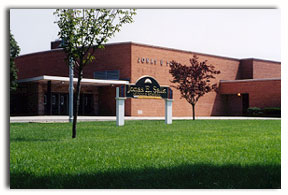Dear Journal,
Today, at like, 6 o'clock or something, I was too lazy to get up, but I did anyway. So when I was up, I took a shower and got ready. Then I think I went to school. In Bio we learned some stuff I think, but I mostly just dazed off and thought about things. Like why peanutbutter is sticky, and how awesome it sounds when you rub two pickle slices together, 'cos you get that tiny little squeeky noise...
Anyway.
If I had paid attention (or stayed awake for that matter) in Bio, I probably would've learned about antibodies and stuff. But I was too lazy. So let's see, what do I know about antibodies.....
They're Greeeeeat!

Why you ask?
READ ON!
Without our immune system we would be.....

Why?
Our B-Cells, which produce antibodies, test every cell they come in contact with. They check its antigens, which are really like name tags. Antigens are present on EVERY SINGLE CELL....even our own! But, luckily for us, our antigens are recognized by our B-cells as our own, and they do not trigger a response.
However, when a B-cell comes in contact with a foreign invader, such as a virus, B-cells speed into action! Now there are two things that can happen:
1) If the virus has been in the body at an earlier time, the B-cells would already have made antibodies. If this is so, then the B-cells recognize the virus as an intruder, clone 1000's of B-cells with antibodies, and plasma cells release antibodies. Antibodies are "handcuffs" and they slow down the intruder for an easier destruction! How exciting!
2) If this virus is a new intruder, B-cells make antibodies for that specific virus or invader. At this rate, it takes a long time (about 10-17 days) to dispose of the virus, but antibodies have now been made, and are ready to leap like a crouching tiger!

YIKES! I feel bad for the virus the next time it tries to get in your blood!
Then of course, after these antibodies are made, the next time the virus enters, our immune system is able to recognize it so much quicker, and therefore destroy it uber quickly.

This graph shows the concentration of antibodies before and during the first exposure to the virus, and before, during, and after the second exposure. As you can clearly see, after the first attack, antibodies are at the ready, and can recognize, locate, and destroy the unwanted invader quickly and efficiently. This truly was an amazing adaptation.
Now comes the ever popular question: How can we produce millions of antibody proteins if we only have a few thousand genes?
AHA! The answer seems difficult. But behold! It is not!
If we had four decks of cards, and we picked 1 card from each at random, we could end up with a total of 7,311,616 possible combinations. That's alot of combos!

But seriously...
There are more than 52 selections to pick from in humans. We are only able to make these millions of combinations by picking different parts of DNA and putting them together. This process allows for an enormous amount of options.
And now......
For the moment you've all been waiting for.......
It's finally time......
Don't hold your breath......
Here it comes.....
OH NO!!!!
It's..................

Vaccinations???? Oh well.
Vaccinations are really weakened or even dead forms of viruses. They cant harm us as much as the actual virus because, well, they're weak! These weak viruses allow our immune system to make antibodies specifically for the virus, without making us feel the full effects of the disease.
Vaccines are most successful against viral diseases.

Does this school look familiar? It should! This is Jonas E. Salk Middle School, and it was named after the man who invented the vaccination.
Here he is.

That's right. Jonas E. Salk.
Although Salk did not win a nobel prize for medicine, he was a brilliant man, and should be acknowleged for his findings, and specifically for his ending of the polio epidemic.

So if that is Active Immunity, then what is Passive Immunity??
The best example of passive immunity is when infants obtain antibodies from their mothers breast milk. This is specifically referred to as Maternal Immunity. Antibodies pass from the mother to the infant, and because the two are exposed to the same virus's and invaders, these antibodies are especially helpful.
Another way to obtain passive immunity is through injection. In these cases, antibodies are injected into the bloodstream. However, this type of immunity only lasts for a very short time. Hence the term, "Passive Immunity."
And what about the virus's that sneak into the body cells?
Well now, thats a different story for another journal entry.
Until next time.
Sean



































